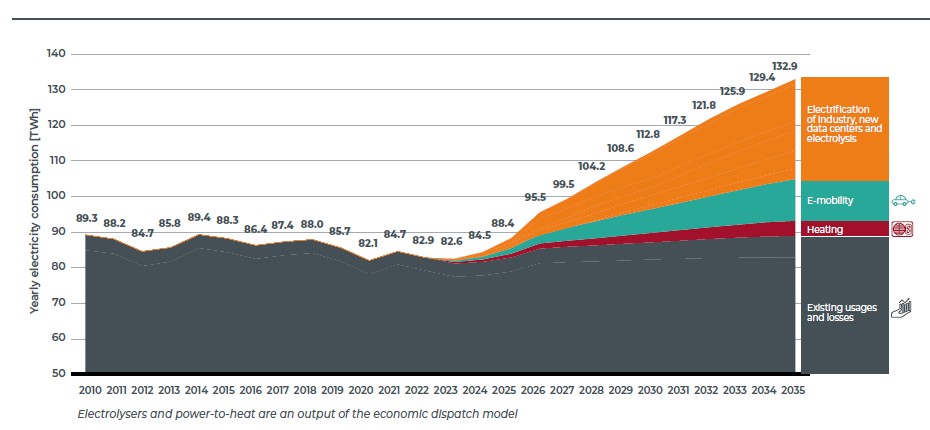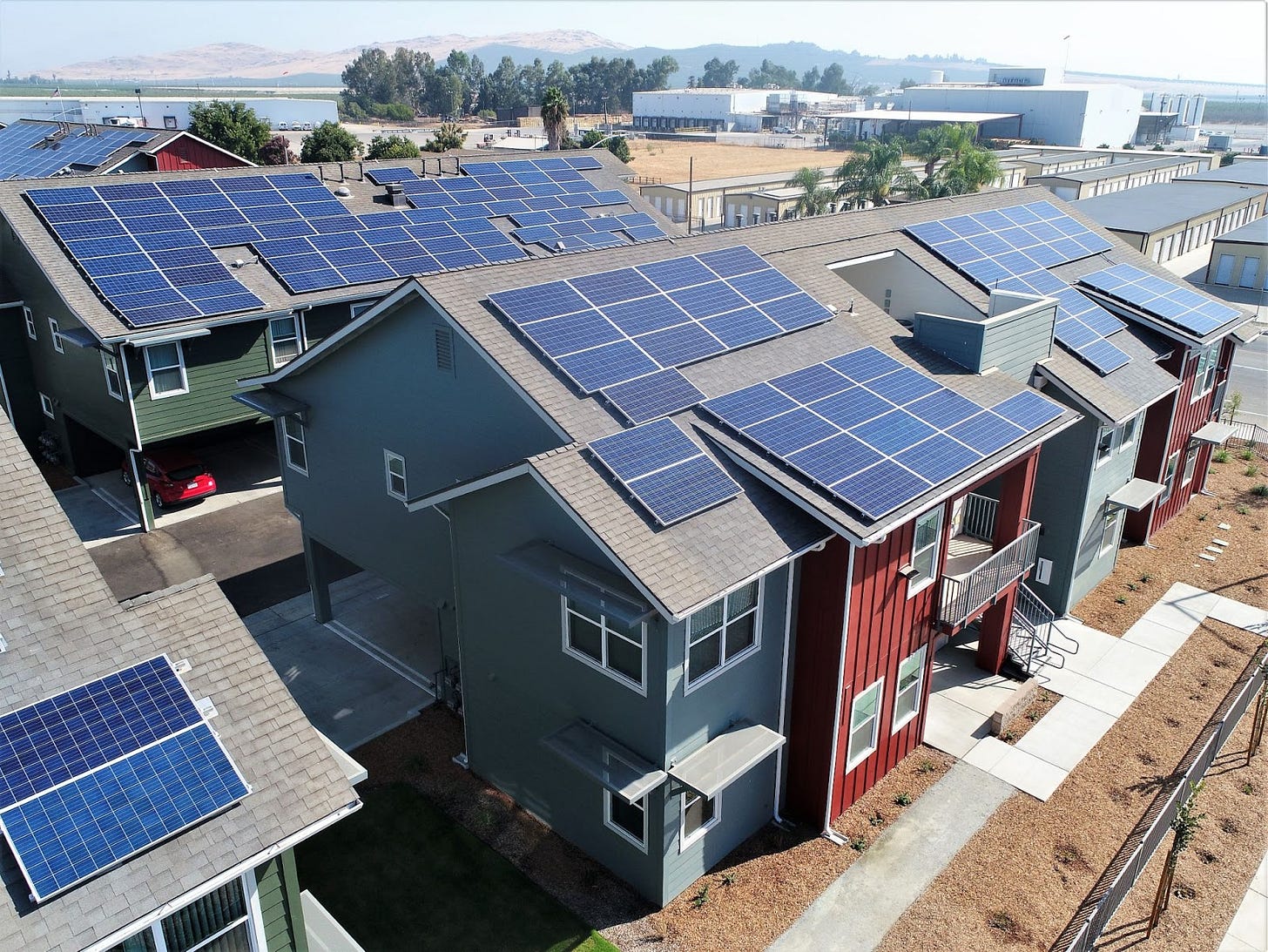Grid Upgrade - Part 1: the reasons
Why our electricity infrastructure demands immediate attention.
This post is the first leg of a two-part series on the electricity grid. In this installment, we delve into the compelling rationale behind the imperative need for grid investments. The subsequent post will expound upon the anticipated repercussions and outcomes.
The interconnected electricity grid stands as a remarkable system that unites millions, if not billions, of appliances and machines, forming the lifeblood of our modern existence. Beyond its sheer scale, this intricate web of powerlines serves as the tool for our ongoing endeavor to shift from an energy system heavily reliant on fossil fuels to a more sustainable and cleaner alternative. It is abundantly clear that the path to decarbonization largely depends on the reduction of emissions stemming from electricity generation and the concurrent electrification of various sectors, such as heating, transportation, and industry1.
Therefore, it is not surprising to see repeated calls for more investments in the electricity grids such as in the Economist, the European wind lobby group, or the IEA. The latest one is from Kadri Simson, EU commissioner for Energy.
There is no green future for Europe without an upgraded power grid.
The consensus is clear: We need to upgrade and extend the electric grid as it will play a pivotal role in our decarbonization effort. But what are the main drivers for such investment needs in the grid?
Let’s dig in.
Reason 1: More electric consumption
The first reason lies in the anticipated increase in electricity consumption, marking a noteworthy departure from historical trends observed in numerous European nations. Evidently, the electrification of heating, transportation, and industrial processes, coupled with emerging applications like data centers and hydrogen production, will culminate in a surge in electricity demand. This shift is unequivocally corroborated by the latest adequacy and flexibility report from Elia, the Belgian TSO2, wherein existing consumption patterns are projected to remain relatively stable, while novel applications are poised to augment overall demand.
It is essential to emphasize that the adoption of electricity in sectors traditionally reliant on fossil fuels plays a pivotal role in enhancing efficiency. Electric appliances, by and large, exhibit significantly superior efficiency compared to their fossil fuel-based counterparts providing similar energy services. This heightened efficiency can be attributed to the inherent superior quality of electricity, a notion that is elegantly encapsulated in the concept of exergy3.
Certainly, the surge in electric consumption underscores the imperative to enhance our power networks. However, there exist additional compelling factors that necessitate the development of a more robust and expansive grid.
Reason 2: much larger generation capacity
Another crucial aspect to consider pertains to the generation side of the equation. Wind and solar energy sources exhibit significantly lower capacity factors4 compared to their more conventional counterparts. Consequently, producing an equivalent amount of electricity necessitates a substantially greater amount of installed capacity. To illustrate this point, let's examine the case of Germany, a prominent European leader in the deployment of wind and solar energy.
Germany is set to increase drastically the total generation capacity. Indeed, by 2030, the country will target 215 GW of solar, 115 GW of onshore wind, and 30 GW of offshore wind, totaling 360 GW of solar and wind capacity by the end of this decade, only 7 years from now. Furthermore, the German Transmission System Operators are planning for more than 600 GW combined installed capacity by 2037. This translates to a staggering threefold increase in generation capacity when juxtaposed with the levels observed in 2016, a mere two decades prior.
An electricity grid is primarily engineered with a focus on its transmission capacity rather than the quantity of energy it conveys. With the tripling of total installed capacity projected to occur within a mere two decades, it becomes imperative to expand the grid infrastructure to accommodate this substantial growth. Failing to do so will inevitably result in congestion issues and non-uniform market prices prevailing across various bidding zones. In fact, the scarcity of adequate transmission capacity has prompted discussions about dividing bidding zones across Europe, including in Germany.
Reason 3: location of new generation capacity
Another compelling factor driving the necessity for an upgraded electricity grid pertains to the geographical placement of wind and solar resources. This challenge can be distilled into two distinct aspects: the presence of large-scale renewable projects situated at considerable distances from major consumption centers, and the proliferation of distributed generation sources.
Location - Part 1: Large renewable projects far from consumption centers
Large-scale renewable projects are sometimes situated at considerable distances from both consumption centers and existing grid infrastructure. A prominent illustration of this scenario is the North Sea offshore wind projects, which are hailed as the prospective largest European power plant. These projects necessitate the development of an entirely new transmission infrastructure to convey the generated electrons back to the mainland.
Another illustrative case lies in the imperative to establish more robust connections between Northern Germany, renowned for its abundance of wind turbines, and the Southern region, which houses a substantial industrial complex. Michael Jesberger, the CEO of TransnetBW, one of Germany's four major Transmission System Operators (TSOs), underscores the shift from a distributed generation mix across the nation to a system characterized by significant disparities:
The wind is in the North, the sun is in the South and [that’s] the law of nature, we cannot change it. Instead of thermal or nuclear distributed over the country, we will now have one large wind farm in the North of Germany, and the energy will need to be brought down South.
Location - Part 2: Distributed generation
Investment requirements extend beyond transmission to include distribution networks. Traditionally, distribution networks primarily served the purpose of delivering energy to consumers. However, with the advent of the solar revolution, every household now has the capacity to generate a certain amount of electricity for its own use and even contribute surplus energy back to the grid. Some distribution grids are already grappling with significant challenges in integrating greater amounts of solar energy, as is the case in Wallonia, a region in Belgium.
Reason 4: Need for mutual support
Another reason lies in the imperative for cross-border cooperation. It's evident that wind and solar energy sources are not continuously active, experiencing periods of zero generation. The interconnection of countries and regions plays a crucial role in leveling the fluctuations in wind and solar power output.
In fact, this necessity for mutual support to mitigate the intermittency of renewable energy generation forms the foundation for concepts that envision interconnecting distant regions, such as:
The Xlinks project, which connects the UK with Marocco directly.
The EuroAsia and EuroAfrica Interconnectors.
Broader ideas of Global Grids.
This idea of mutual support to reduce the inherent volatility was best expressed by the Prime Minister of India, Narendra Modi:
We have a dream, One World, One Sun, One Grid. We generate round-the-clock electricity from the Sun as it sets in one part of the world but rises in another part. The Sun never sets for the entire Earth.
Furthermore, in a letter from the Greek delegation to the Council of the European Union, Greece is explaining the needs for more interconnection to boost the mutual support within Europe because “there is a strong rationale in connecting the windy north with the sunny south”.
How much upgrade?
The extent of the grid upgrades is a-million dollar question, or actually a billion-dollar question. Predicting the precise requirements and necessary budget is a challenging endeavor, fraught with uncertainty, given its dependence on numerous variables, including the pace of decarbonization. BloombergNEF’s New Energy Outlook estimates a global need of $21.4 trillion in the Net Zero Scenario by 2050, around a fifth of the global 2022 GDP. In the EU, grid investments of 584 billion euros are needed until 2030 with 400 billion euros alone for the distribution grid.
In a nutshell
The grid stands as the key for facilitating the decarbonization process, necessitating a substantial upgrade. This need stems from four distinct factors: one pertaining to the demand side, characterized by a substantial surge in demand due to emerging applications, and three concerning the generation side. These three generation-related factors encompass the imperative for significantly increased installed capacity, the location of new generation assets, and the essential requirement for cross-border and regional cooperation to ensure mutual support.
Stay tuned for the second installment, where we will explore the potential ramifications of the need for such a grid upgrade.
For example, electrifying heat through heat pumps or electrifying transportation with electric mobility.
TSO: Transmission System Operator, the company operating the electricity transmission grid.
Exergy is the maximum useful work that can be extracted from a system as it reversibly comes into equilibrium with its environment.
The capacity factor is defined as the energy produced over a certain time compared to the theoretical maximum. For example, if a 3-kW solar produced 3600 kWh, the capacity factor is 3600 / (3*8760) = 13.7%. There are 8760 hours in a year.






http://xn--drmstrre-64ad.dk/wp-content/wind/miller/windpower%20web/en/tour/wres/euromap.htm